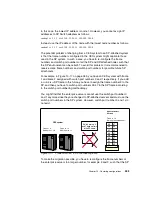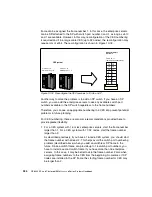
344
RS/6000 SP and Clustered IBM
^
pSeries Systems Handbook
If you are interested in some of these event definitions, you can use them by
registering them. For example, if you are interested in checking that all the
Enterprise Servers in your CES system are up and running, you can use the
hostResponds event definition.
To register the hostResponds event definition, click the hostResponds event
definition icon in the Event Definitions pane. Then click the Register icon on
the tool bar. The hostResponds event definition icon changes into one with
four colors.
When the event occurs, the event definition icon changes into an envelope
icon. At the same time, the Global View of Event Notification Log window, will
pop up.
When you do not need to manage the event definition that you selected, you
can unregister the event definition. Click the hostResponds event definition
icon in the Event Definitions pane. Then click the Unregister icon on the tool
bar. The icon changes back to grey. You will not be notified if the event
occurs.
3. Performance Monitor Perspective
Performance Monitor Perspective may set up performance and monitoring
hierarchies and archiving on your CES.
10.4 Building SP/CES systems scenarios
We may consider different scenarios of building your SP/CES system. Some of
them are:
Standard SP system: This is the case when you want to develop an SP
system using the standard thin, wide and/or high SP nodes.
Adding SP-attached servers to an SP system: This is the case when you
have an SP system and you want to extend it using Enterprise Servers. If the
Enterprise Servers are new servers, you install your SP-attached servers
from scratch. If the Enterprise Servers are existing servers, you migrate them
to SP-attached servers.
CES system: This is the case when you want to manage Enterprise Servers
from a single point of control. Therefore, you add a CWS to your Enterprise
Servers and install PSSP on all of them. If the Enterprise Servers are new
servers, you install your CES system from scratch. If the Enterprise Servers
are existing servers, you migrate them to CES.
Migrating an existing SP system to a CES system: This is the case when you
have an SP system with SP-attached servers. You want use all of your SP
frames for other SP systems. Therefore, you remove all of your SP frames
from your SP system and manage it as a CES system.
Summary of Contents for RS/6000 SP
Page 2: ......
Page 6: ...iv RS 6000 SP and Clustered IBM pSeries Systems Handbook...
Page 16: ...xiv RS 6000 SP and Clustered IBM pSeries Systems Handbook...
Page 48: ...24 RS 6000 SP and Clustered IBM pSeries Systems Handbook...
Page 100: ...76 RS 6000 SP and Clustered IBM pSeries Systems Handbook...
Page 182: ...158 RS 6000 SP and Clustered IBM pSeries Systems Handbook...
Page 218: ...194 RS 6000 SP and Clustered IBM pSeries Systems Handbook...
Page 284: ...260 RS 6000 SP and Clustered IBM pSeries Systems Handbook...
Page 388: ...364 RS 6000 SP and Clustered IBM pSeries Systems Handbook...
Page 436: ...412 RS 6000 SP and Clustered IBM pSeries Systems Handbook...
Page 477: ...0 1 spine 0 1 0 169 53 89 pages RS 6000 SP and Clustered IBM pSeries Systems Handbook...
Page 478: ......
Page 479: ......






























